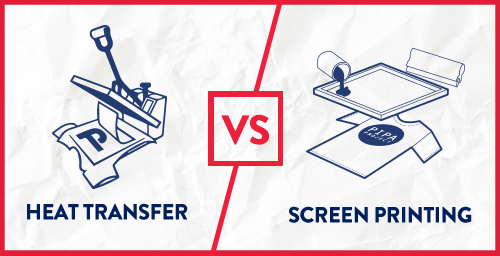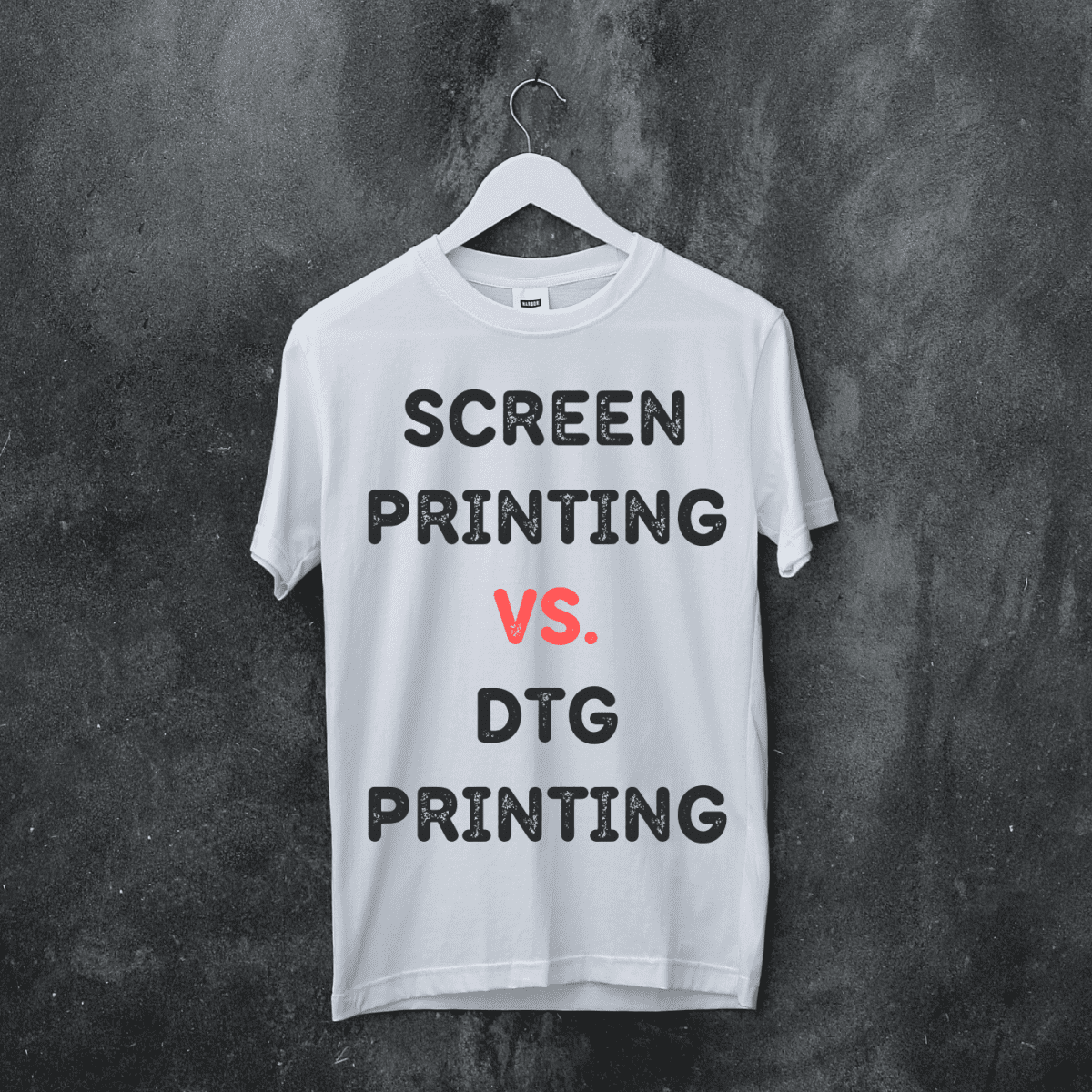A Biased View of Tx Tees
A Biased View of Tx Tees
Blog Article
The Ultimate Guide To Tx Tees
Table of ContentsThe smart Trick of Tx Tees That Nobody is Talking AboutThe Tx Tees Ideas4 Simple Techniques For Tx TeesTx Tees Can Be Fun For Everyone6 Simple Techniques For Tx TeesAll About Tx TeesAll about Tx Tees
That brings your total amount to around $1,900 gross and delivery. Add up various other expenses, like the number of energies it takes to run the store and the expense of ink and emulsion per layout. custom monograming. Take the print listed below. This is a one-color picture, so the cost of ink per t shirt is around 20 cents.The solution needs to just be a couple of cents given that you 'd just require to layer one screen for this task. Typically, printers try to make up to 45% profit on a print job.

With DTF, you can print a handful of t shirts, or just one. Use the very same calculator as the area above to compute just how much profit you would certainly use DTF transfers. Compare the prices and revenues to whichever method talks finest to your setup and procedure. Both screen printing and DTF have their particular niches worldwide.
Tx Tees Can Be Fun For Anyone
The very best means to recognize? Ask around and see what print shops like yours are doing. screen printer. Attempt both out and see which you like far better
When you're selecting what sort of printing approach to make use of for publishing your artwork designs on your garments, it is very important that you understand the distinctions in between these 2 techniques so you can take full advantage of outcomes while lessening prices. Display printing is one of the most frequently made use of strategy for publishing styles on textiles.
DTG printing is likewise referred to as area or direct to garment printing because it prints only what is required rather of making a display as screen printers do. https://tx-tees-45701767.hubspotpagebuilder.com/blog/txtees02. Screen printing works by display filler squeegee screen printing ink display mesh screen, after that transferring the picture to garment using warm and/or stress
The DTG printer utilizes unique dye-sublimation inks that are applied into a pre-designed photo by a digital printing system. The inks enter into the material, enabling dynamic shades and extraordinary information. It's also understood as place or direct to garment printing due to the fact that it prints only what is required rather than making a screen as display printers do.
Some Known Facts About Tx Tees.
First, it's much faster - you can print a fullcolor picture in minutes, rather than hours for display printing. Second, there's no established time or expenses included - you can print any type of style you such as, without needing to produce a display initially. Third, there's no waste - since screen printers screen print one design at a time, they have to screen each color separately.
The paper is very expensive and can only be used once. Once it's printed on, it has to be discarded. - The initial purchase price is lower than the upfront investment of DTG printers- You can publish multi-color layouts one display each time rather than needing to publish each color separately like DTG printing.

Indicators on Tx Tees You Should Know
Instead of utilizing display mesh as display printers do, color sublimation printers use laser innovation to move your photos onto garments or paper. A warmth process transfers the dye from its solid-state directly into the gas stage which subsequently integrates it onto fabric substrates when they are rapidly heated up to heats under high stress.
Sublimation printing is environmentally friendly. It utilizes much less water than screenprinting, and due to the fact that it doesn't include making use of harmful solvents, it's safe for all kinds of apparel. The dye sublimation inks are also odor free when treated, unlike screen printers that utilize damaging chemicals throughout the screen printing process that leave behind an unpleasant odor.
They also save cash on pricey tools like direct exposure systems considering that dye sublimation printers don't require a UV exposure device or a flash treatment stove that is commonly made use of in display printing (t-shirt printing). What is direct to garment printing (DTG Printing)? DTG printing is an electronic screenprinting procedure that prints directly onto fabric making use of specialized inkjet printers
8 Easy Facts About Tx Tees Shown
DTG printing offers several benefits over traditional screenprinting, consisting of the ability to publish photographic top quality pictures, higher shade vibrancy, and the ability to print layouts on darker materials. DTG printers function by heating up the textile ink up until it develops into a gas. The gas after that permeates the textile, bonding with the fibers to produce an irreversible print.

Display printers just prepare their screen then start publishing until they lack look at this web-site item or ink.- There is a vast array of skilled screen printers throughout the globe, which can be practical for novices. - It's a slower process - screen printers often need to wait on the ink to dry prior to they can publish the next color- Display printers need manual labor, so there's a greater understanding curve and it takes longer to produce a high-quality layout- Screen printing isn't as accurate as DTG printing, so you might obtain some "blood loss" of colors from one component of the picture onto another otherwise done correctly.
The Single Strategy To Use For Tx Tees
Nevertheless, as opposed to utilizing display mesh as screen printers do, color sublimation printers use laser innovation to move your images onto garments or paper. A warmth procedure transfers the dye from its solid-state straight into the gas phase which in turn merges it onto textile substratums when they are rapidly warmed to high temperatures under high pressure.
Sublimation printing is environmentally friendly. It utilizes much less water than screenprinting, and since it does not entail the usage of unsafe solvents, it's safe for all kinds of apparel. The dye sublimation inks are additionally odorless when cured, unlike screen printers that make use of harmful chemicals during the screen printing process that leave an undesirable smell.
They also save money on expensive devices like direct exposure devices since color sublimation printers do not call for a UV direct exposure device or a flash treatment stove that is generally utilized in screen printing. What is direct to garment printing (DTG Printing)? DTG printing is a digital screenprinting process that prints directly onto fabric utilizing specialized inkjet printers.
The Of Tx Tees
DTG printing provides numerous benefits over typical screenprinting, consisting of the capacity to publish photo quality photos, higher color vibrancy, and the capability to print layouts on darker materials. DTG printers work by heating the fabric ink until it develops into a gas. The gas then penetrates the material, bonding with the fibers to create a long-term print.
Report this page